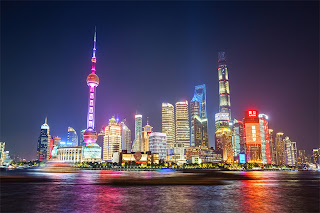
Shanghai is both the most populous city in China and the most populous city in the world. The area around Shanghai was once owned by the Kingdom of Wu, and it was only a fishing village called Hudu. It was established as a market town in 1074, and the area’s coastline was stabilized in 1172 to protect it from the sea. From 1292 to 1927, Shanghai was a county administered by Songjiang Prefecture. The Opium Wars of the 1800s brought much western influence to the city, and many foreigners made Shanghai their home in the first half of the twentieth century. Shanghai’s population has risen to more than 24.15 million people today.
Shanghai became a municipality in 1927.
The name Shanghai is derived from the Chinese words for “above” and “sea.” This refers to the city’s location at the confluence of two rivers, as well as the city’s position, which was once thought to be literally on the sea (during the Tang Dynasty).
It is estimated that 174,000 expats have relocated to Shanghai. Their average lifespan is 82.47 years.
During WWII, many Jews fleeing the Nazis sought refuge in Shanghai. Even after the Japanese invaded and took control of Shanghai in 1937, the refugees were welcomed. Despite being allies, the Japanese military refused to hand over the refugees when the Nazis repeatedly demanded it.
Shanghai’s metro system is the world’s longest, with 548 kilometers of track.
Shanghai Tower is the city’s tallest structure. With a height of 632 meters, it is China’s tallest skyscraper.
Shanghai has the fourth most skyscrapers in the world, with 124. Hong Kong is home to 303 skyscrapers. Dubai has 144 skyscrapers to New York’s 237.
Shanghai is home to the world’s largest Disney Store, measuring 54,000 square feet.
Shanghai covers an area of 2,448.1 square miles and has a population of more than 24.15 million people.
Shanghai’s climate is described as humid and subtropical. It has four distinct seasons, including cold but almost snowless winters.
Shanghai has over 30 post-secondary institutions, including Fudan University, Tongji University, and Shanghai Jiao Tong University, which are among China’s most prestigious.
Shanghai, like many of the world’s largest cities, has an extensive public transportation system comprised of buses, subways, light railways, and taxis.
By 2012, Shanghai had 157 public parks, providing green space to break up the concrete jungle atmosphere.
Smog has become a major issue in Shanghai, with levels reaching 31 times the international acceptable level in 2013. This resulted in the removal of one-third of all government vehicles from Shanghai’s roads. Outdoor education and activities were also halted in schools.
Shanghai is home to several notable museums, including the China Art Museum, the Shanghai Museum, the Shanghai Natural History Museum, and the Power Station of Art.
The Shanghai Marriage Market is a weekly market where parents can exchange information about their children in the hopes of finding a suitable partner. It is held at People’s Park on Saturdays and Sundays.








